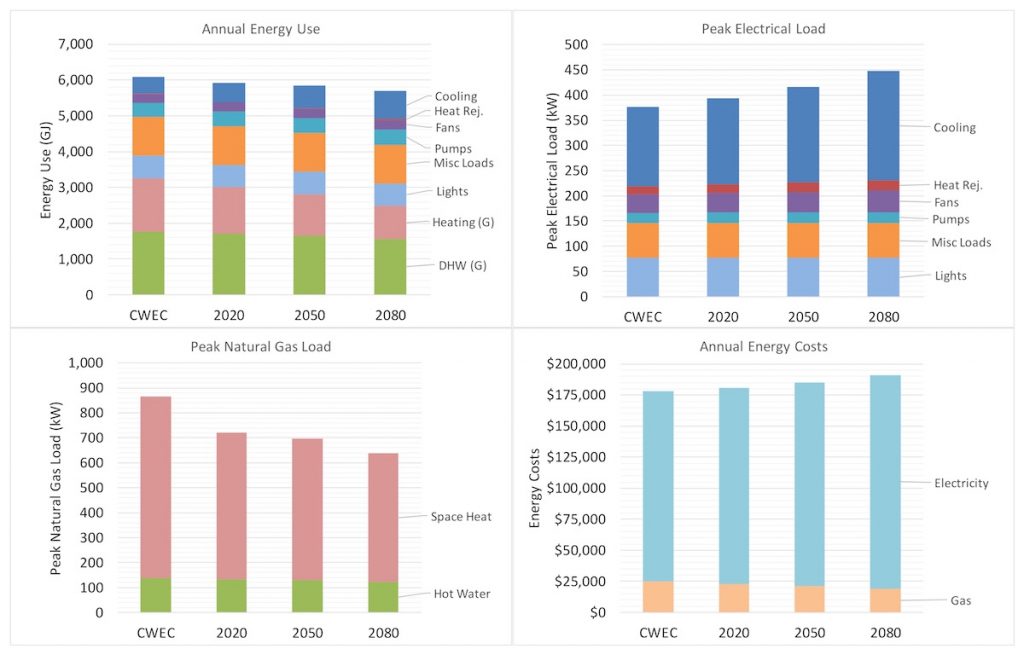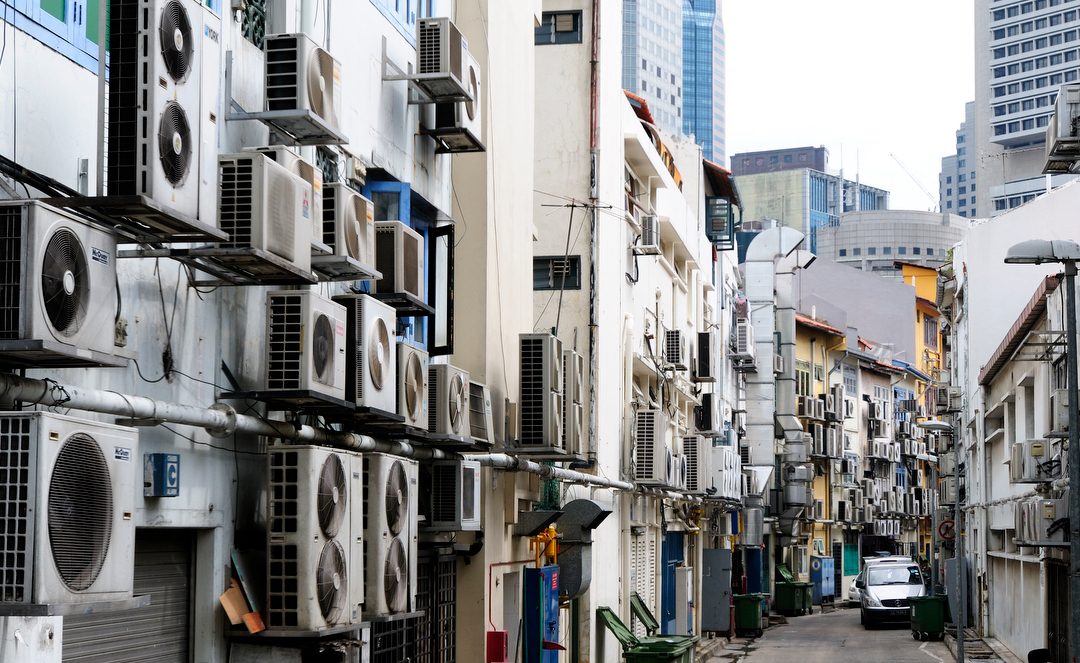If you are a building owner, developer, or architect, you might wonder, “How will climate change affect my building’s energy consumption, and is there anything I need to do about it?” Thankfully, there is a tool that can help answer this question. CCWorldWeatherGen uses a process called “morphing” to translate weather files into future weather files based on long term simulations of the Earth’s climate. These weather files can be used by building modelling tools to predict future building energy use.
The Intergovernmental Panel on Climate Change (IPCC) provides the results of long term climate simulations. CCWorldWeatherGen uses those simulations to morph weather files into future weather files for the years 2020, 2050, and 2080 and uses the locations of the weather files to give more accurate predictions of how the weather will change. Overall, the world has warmed about 1°C compared to historical temperatures, but in Canada, the warming is much more pronounced. In Ontario, the warming is closer to 3°C. CCWorldWeatherGen accounts for these localized effects.
As a demonstration of the tool, we simulated a large multi-unit residential building (MURB) using Ottawa weather morphed by CCWorldWeatherGen. For the baseline, we used a CWEC weather file, which uses statistically average weather from 1953 to 1995.

Comparing future weather cases to the CWEC baseline we see:
- Lower overall energy usage and carbon emissions
- Higher overall energy costs
- Higher electricity consumption for cooling
- Lower natural gas consumption for heating and hot water
- Higher peak cooling demand
- Lower peak heating demand
What these results tell us is that cooling will be a much more significant component of energy consumption and energy cost in the future. Also, even though heating will still be a large factor, heating energy use and peak loads will be significantly reduced.
Buildings last a long time. Modelling buildings with future weather will help identify some of the climate related issues they may face in the future, such as proper sizing of equipment and solving comfort issues. We see this as one part of trying to achieve resilient buildings to cope with future climates.
(Image from pmorgan at Flickr)

